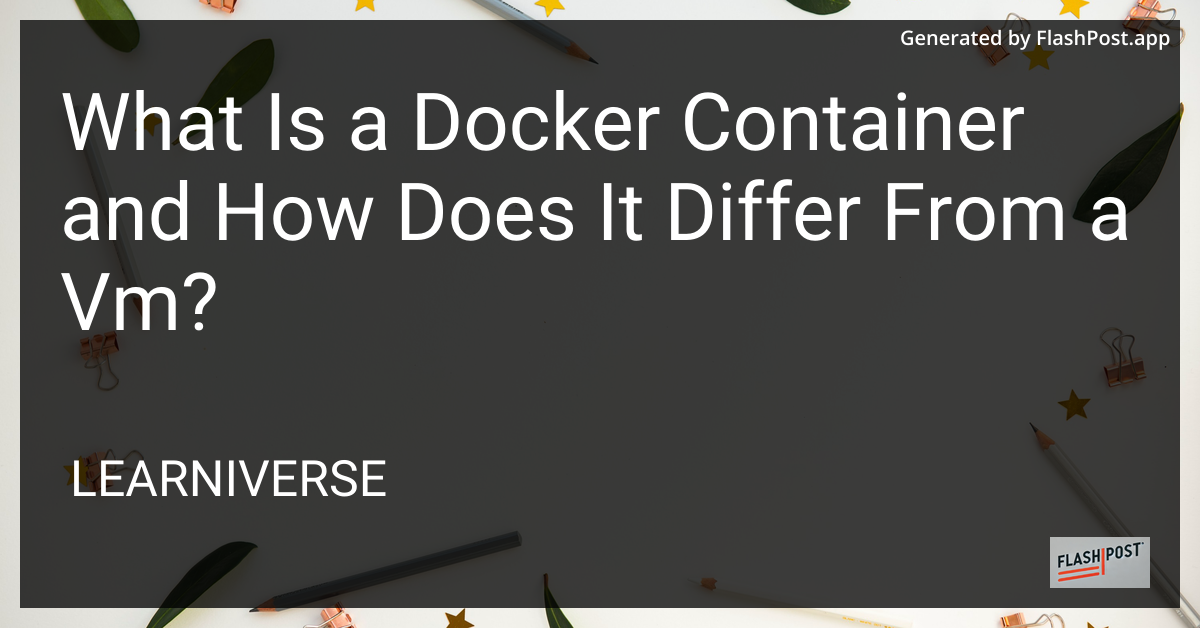What Is a Docker Container and How Does It Differ From a Vm?

In the ever-evolving world of technology, understanding the nuances between different computing environments is crucial. Two such environments that are commonly compared are Docker containers and virtual machines (VMs). This article delves deep into what a Docker container is and how it fundamentally differs from a VM.
What is a Docker Container?
A Docker container is a lightweight, standalone, and executable package that includes everything needed to run a piece of software, including the code, runtime, system tools, libraries, and settings. Containers are based on the concept of containerization, which is fundamentally about separating applications from the underlying host system to ensure reliable performance across different computing environments.
Docker containers are managed using Docker, an open-source platform designed to automate the deployment, scaling, and management of application containers. The primary benefits of using Docker containers include rapid application deployment, the ability to run multiple workloads on a single host, and consistent operation across development, testing, and production environments.
How Do Docker Containers Differ from Virtual Machines?
To fully grasp the distinction between Docker containers and virtual machines, it's essential to look at both their architecture and their use cases:
1. Architecture
Docker Containers: Containers leverage the host operating system's kernel and isolate the application processes through features like control groups and namespaces. They share the OS system kernel and use fewer resources compared to VMs. This makes them lightweight, fast to start, and efficient in terms of resource utilization.
Virtual Machines: VMs, on the other hand, run on a hypervisor and include a full guest operating system along with the application, which leads to a considerable usage of system resources. Each VM is an emulation of physical hardware, thus providing a full-stack environment for applications but being heavier and slower to boot than containers.
2. Resource Usage
Docker Containers: As containers share the host system's OS, they utilize resources more efficiently. This means multiple containers can run on the same amount of hardware that a single VM might require.
Virtual Machines: VMs require separate resources for each instance since they need to run a full OS. This typically results in more overhead compared to Docker containers.
3. Deployment Time
Docker Containers: Containers can be launched within seconds. Their efficiency allows for quick iterations and transitions through different stages of application development and deployment.
Virtual Machines: VMs often take longer to initialize due to the need to boot an entire operating system.
4. Use Cases
Docker Containers: Ideal for microservices architectures, continuous integration and deployment (CI/CD) systems, and when resources are limited.
Virtual Machines: Suitable for running full-scale applications that require isolation with their own OS or legacy systems with specific OS requirements.
Conclusion
In summary, Docker containers and virtual machines serve different purposes and are complementary rather than competitive technologies. Docker containers are lightweight and efficient, providing an ideal solution for modern, agile software development environments. VMs provide full isolation with the heaviness of separate operating systems, which may be necessary for certain legacy systems or specific application needs.
For those interested in further exploring Docker-related setups, consider checking out how to configure SonarQube with Docker, connect to PostgreSQL using Docker, or set up Laravel with Docker in 2025.
Understanding these differences is crucial for making informed decisions about infrastructure and application deployments in an increasingly containerized world.